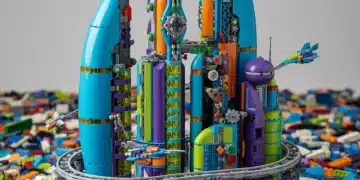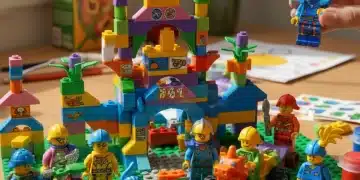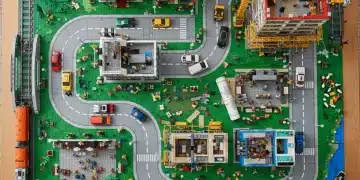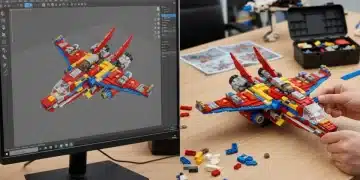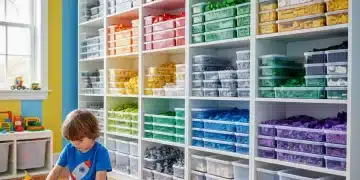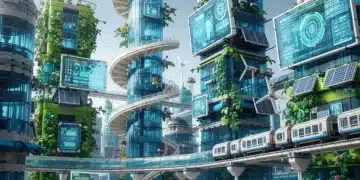Lego MOCs: Designing Unique Builds for Creative Kids
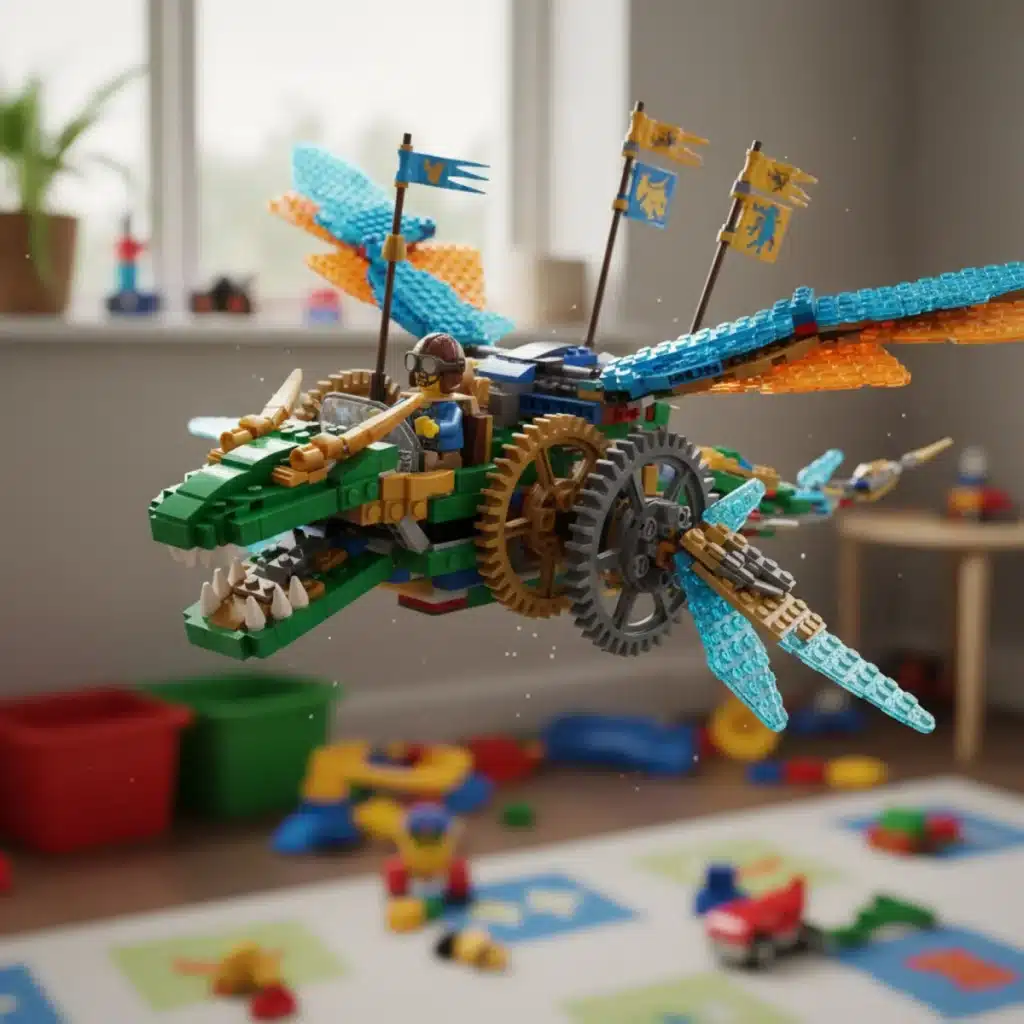
Advertisements
Designing unique Lego MOCs involves a blend of imagination, planning, and structural understanding, allowing builders to transform ordinary bricks into extraordinary custom creations that reflect their personal vision and creativity.
Anúncios
Have you ever looked at a Lego set and thought, “What if I built something completely different?” That’s the magic of Lego MOCs (My Own Creations): Tips for Designing Unique Builds. It’s where your imagination takes the wheel, turning a pile of bricks into anything you can dream up. This guide will help you embark on that exciting journey, transforming you from a follower of instructions to a master builder of your own unique worlds.
Understanding the Essence of Lego MOCs
Lego MOCs are more than just building with bricks; they are an art form, a personal expression, and a fantastic way to engage with the world of Lego beyond the instructions. It’s about taking the fundamental elements of Lego and re-imagining them, creating something entirely new and unique. This process not only hones building skills but also fosters critical thinking, problem-solving, and boundless creativity.
Anúncios
The beauty of MOCs lies in their individuality. Every MOC tells a story, reflects a specific vision, and often presents a unique challenge to the builder. Whether it’s a towering castle, a futuristic spaceship, a detailed miniature scene, or an abstract sculpture, the only limit is your imagination and the bricks you have at hand. Understanding this core principle is the first step toward becoming a successful MOC designer.
What Defines a MOC?
A MOC is fundamentally any Lego creation that isn’t built directly from a set’s instructions. It’s your personal interpretation, your design, from concept to completion. This freedom allows for incredible diversity in themes, scales, and complexities.
- Originality: It must be a concept or design that originated from the builder.
- Creativity: Showcases innovative use of parts and imaginative construction.
- Personal Touch: Reflects the builder’s unique style and vision.
- Problem-Solving: Often involves overcoming structural or aesthetic challenges.
Moving beyond instruction books opens up a world where every brick is a potential tool for innovation. It encourages builders to look at Lego elements in new ways, discovering hidden functionalities and aesthetic possibilities. This foundational understanding sets the stage for truly unique and captivating builds.
Brainstorming and Concept Development
Every great Lego MOC starts with a great idea. Brainstorming and concept development are crucial steps in translating a fleeting thought into a tangible building plan. This phase is about letting your imagination run wild, exploring different themes, and sketching out initial designs. Don’t be afraid to think big, or small, or even a little bit wacky – sometimes the most unconventional ideas lead to the most interesting MOCs.
Start by considering what genuinely excites you. Do you love fantasy, science fiction, historical events, or everyday objects? Inspiration can come from anywhere: movies, books, nature, architecture, or even other Lego creations. The goal is to find a concept that you are passionate about, as this passion will fuel your motivation throughout the building process.
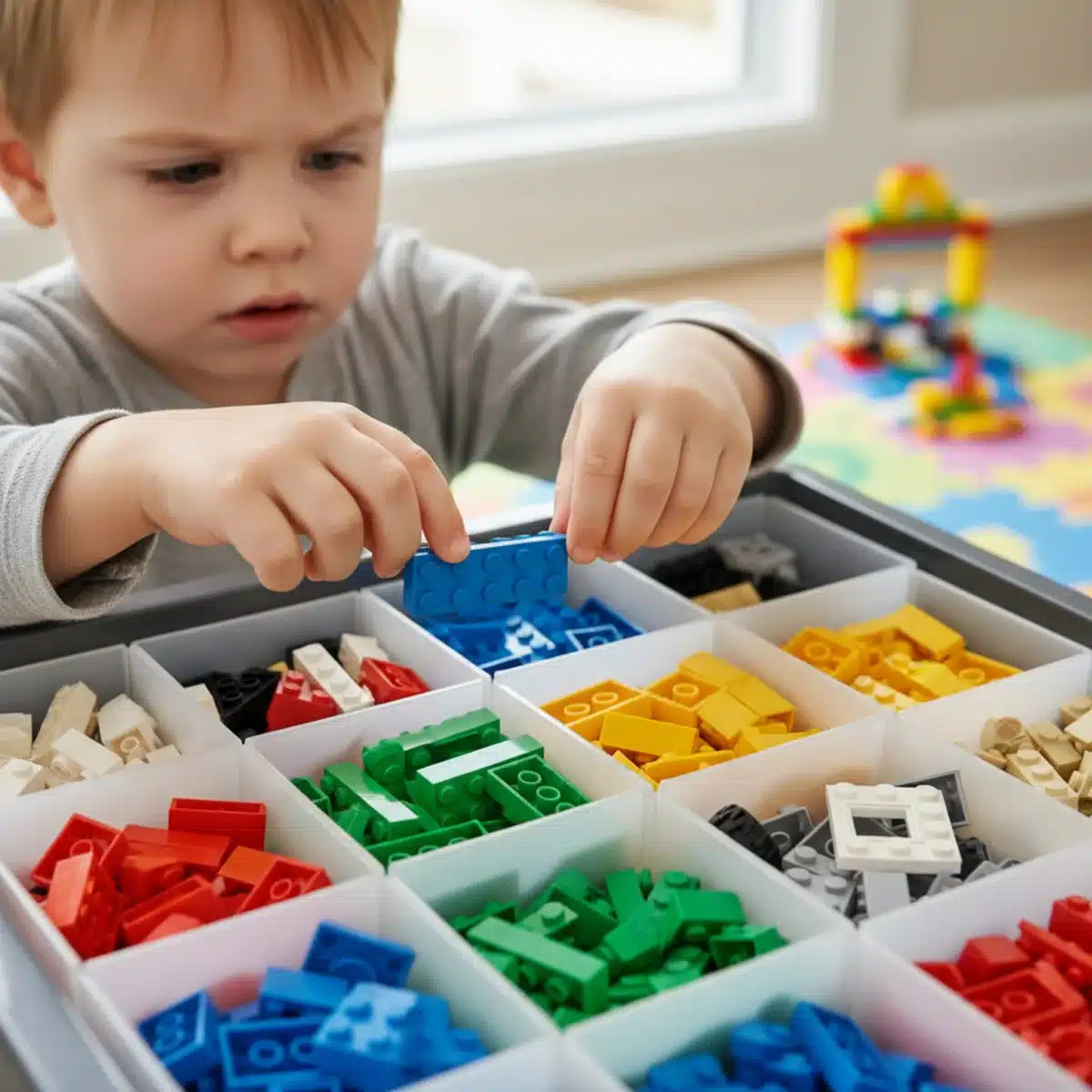
Once you have a general theme, begin to refine your concept. What specific details will make your MOC unique? How will it stand out? This is where sketching, even rough doodles, can be incredibly helpful. Visualizing your idea on paper can highlight potential challenges and opportunities before you even touch a brick. Consider the scale, the color palette, and any special features you want to include.
Finding Inspiration Everywhere
Inspiration is a constant companion for a MOC designer. It’s about being observant and open to new ideas. Look at the world around you with a builder’s eye, constantly asking: “How could I build that with Lego?”
- Nature: Animals, plants, landscapes, and natural phenomena offer endless structural and color inspiration.
- Art & Architecture: Buildings, sculptures, paintings, and even abstract art can spark ideas for form and aesthetics.
- Pop Culture: Movies, video games, comics, and books provide rich narratives and characters to recreate.
- Everyday Objects: Sometimes, the most mundane items can be transformed into fascinating Lego models.
Developing a strong concept before diving into brick-laying saves time and ensures a more cohesive final product. It’s the blueprint for your imagination, guiding your choices and helping you stay focused on your unique vision.
Mastering Structural Integrity and Stability
A visually stunning Lego MOC is only as good as its structure. Mastering structural integrity and stability is paramount to ensuring your creation doesn’t collapse under its own weight or at the slightest touch. This involves understanding how different bricks connect, how to distribute weight, and how to reinforce weak points. A well-built MOC can withstand handling and display, allowing its beauty to be appreciated without fear of breakage.
One of the foundational principles is the idea of “studs not on top” (SNOT) building, which allows for different orientations of bricks, creating stronger connections and more complex shapes. Learning to incorporate SNOT techniques can open up a world of possibilities for detailed and stable structures. Additionally, understanding the importance of interlocking bricks across multiple layers, rather than just stacking them directly, is crucial for preventing vertical collapse.
Key Techniques for Stability
Building a robust MOC requires a deliberate approach to construction. It’s not just about getting the shape right, but also about making sure it holds together.
- Interlocking Layers: Ensure bricks overlap across multiple layers to distribute stress and prevent separation.
- Cross-Bracing: Use Technic pins, axles, or long plates to connect different sections of a model, adding rigidity.
- Reinforcement: For tall or heavy sections, consider internal Technic frames or columns for added support.
- Weight Distribution: Balance heavy elements evenly or place them closer to the base to prevent tipping.
Experimenting with different connection methods and observing how real-world structures are built can provide valuable insights. A solid foundation and thoughtful internal structure are the unsung heroes of any impressive Lego MOC, ensuring your creative vision stands tall.
Color Theory and Aesthetic Appeal
Beyond structure, the visual impact of your Lego MOC largely depends on your use of color. Color theory in Lego building isn’t just about picking your favorite hues; it’s about creating harmony, contrast, and visual interest that enhances your design. A well-chosen color palette can elevate a simple build into a masterpiece, drawing the viewer’s eye and conveying emotion or narrative.
Consider the mood you want to evoke. Bright, contrasting colors often convey playfulness and energy, perfect for fantastical creatures or vibrant scenes. Monochromatic or analogous palettes, on the other hand, can create a sense of sophistication, realism, or calm. Don’t be afraid to use a limited color palette to create a stronger, more focused aesthetic. Sometimes, less is more when it comes to color, allowing intricate details to shine without being overwhelmed.
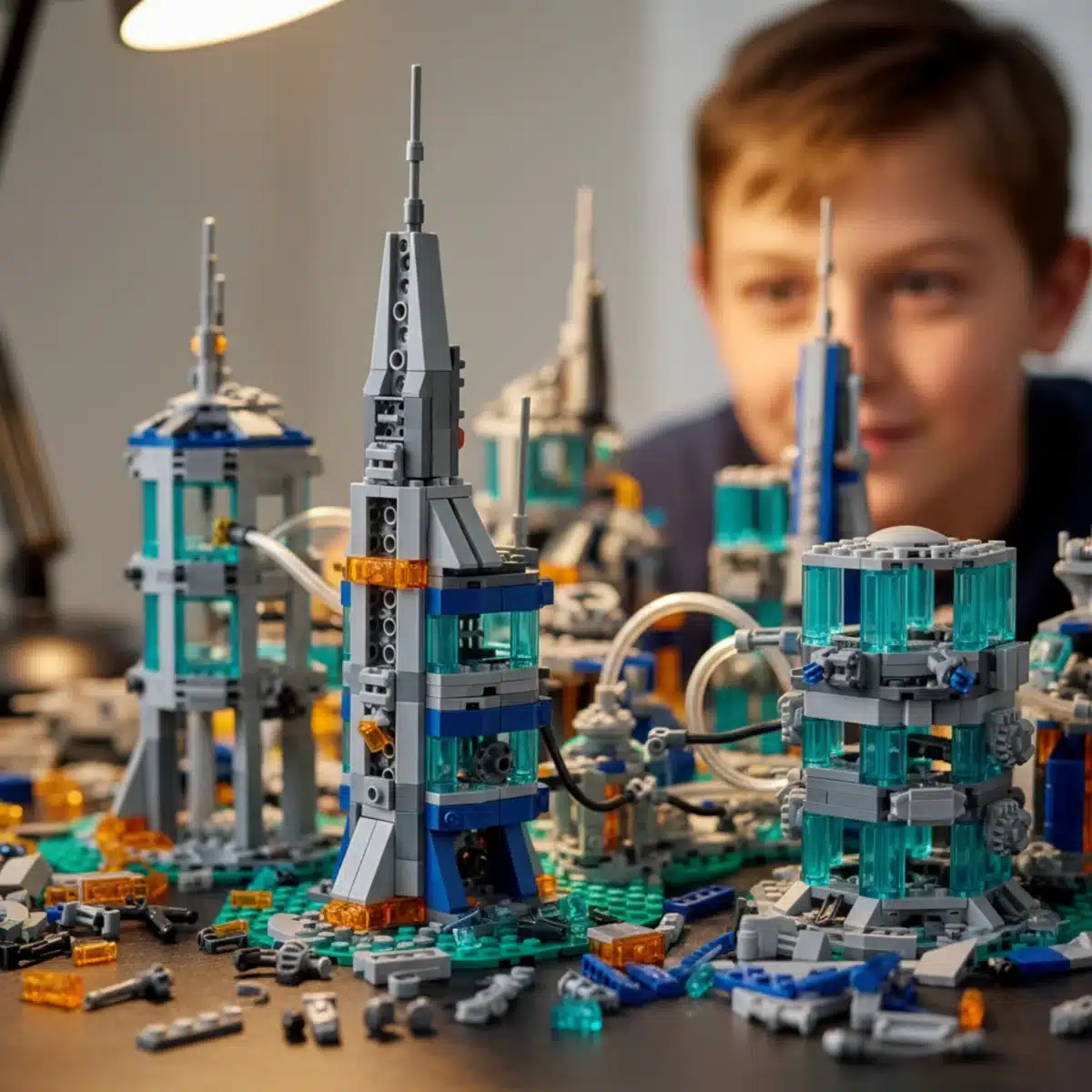
Experiment with color blocking, where large sections are built with a single color, or with subtle gradients that transition smoothly from one shade to another. Pay attention to how different colors interact and how they can be used to highlight specific features or create depth. The strategic placement of a single contrasting color can draw attention to a focal point, guiding the viewer’s eye through your creation.
Using Color Effectively
Thoughtful color choices can transform a good MOC into a great one. It’s about more than just aesthetics; it’s about communication.
- Theme Consistency: Ensure colors align with the theme or story of your MOC (e.g., earthy tones for nature, metallic for sci-fi).
- Highlighting Details: Use contrasting colors sparingly to draw attention to important features or intricate sections.
- Creating Depth: Lighter colors tend to recede, while darker colors advance, which can be used to create visual depth.
- Brick Availability: Be mindful of which colors are available in the brick types you need, as this can influence your palette.
Ultimately, practice and experimentation are key. Build small sections with different color schemes to see what works best before committing to a full design. The right colors can make your MOC truly pop and leave a lasting impression.
Detailing and Grieving Techniques
Once the main structure and overall color scheme are in place, the true magic of a unique Lego MOC often lies in the details. Detailing, sometimes referred to as “greebling” in the Lego community, involves adding small, intricate pieces to create texture, complexity, and a sense of realism or futurism. These small additions can transform a smooth, plain surface into something visually rich and engaging, giving your MOC character and depth.
Greebling is particularly popular in science fiction and space-themed builds, where small pipes, grilles, tiles, and other technical elements are used to simulate machinery, panels, and intricate systems. However, detailing isn’t limited to greebling; it also encompasses adding environmental elements, minifigure accessories, or tiny architectural features that bring your MOC to life. The goal is to add visual interest without overwhelming the main design.
Effective Detailing Strategies
Small details can make a huge difference, turning a generic build into a unique work of art.
- Varying Textures: Use different types of bricks (smooth tiles, studded plates, textured bricks) to create varied surfaces.
- Layering: Build up layers of small plates and tiles to create a sense of depth and dimension.
- Hidden Details: Incorporate small, unexpected elements that reward closer inspection, like tiny tools or hidden compartments.
- Contextual Elements: Add details that align with the MOC’s narrative or environment, such as foliage for a forest scene or antennas for a spaceship.
Don’t be afraid to experiment with unconventional brick uses for detailing. A headlight brick turned sideways, a minifigure accessory used as a pipe, or a hinge plate creating an unusual angle can all contribute to a unique and compelling aesthetic. These thoughtful details are what often distinguish a good MOC from an unforgettable one.
Photography and Presentation
After investing countless hours into designing and building your unique Lego MOC, the final step is to showcase it effectively. High-quality photography and thoughtful presentation are crucial for sharing your creation with the world, whether online, at a Lego exhibition, or simply with friends and family. A great MOC can be let down by poor photos, while good presentation can elevate even a simple build.
Focus on clear, well-lit photographs that capture your MOC from multiple angles. Natural light is often the best, but if you’re using artificial light, try to diffuse it to avoid harsh shadows. A clean, uncluttered background will ensure your MOC is the star of the show. Consider using a simple backdrop, like a white sheet or a piece of poster board, to make your colors pop and your details stand out. Take both wide shots to show the overall design and close-ups to highlight intricate details and special features.
Tips for Showcasing Your MOC
Presenting your MOC effectively ensures your hard work gets the recognition it deserves. Good photos tell a story.
- Lighting is Key: Use soft, even lighting to illuminate your MOC without creating harsh shadows.
- Multiple Angles: Capture your MOC from various perspectives to showcase its full design and depth.
- Clean Background: A simple, uncluttered background helps your MOC stand out and avoids distractions.
- Highlight Details: Include close-up shots of unique techniques, greebling, or minifigure interactions.
Beyond photography, consider how you might present your MOC in person. A custom display base, a small narrative description, or even a creative title can add to the overall impact. Remember, presentation is an extension of your creative process; it’s how you invite others to appreciate the unique world you’ve built with Lego bricks.
Joining the MOC Community and Continuous Learning
Designing unique Lego MOCs is a journey of continuous learning and improvement, and one of the best ways to grow as a builder is by engaging with the vibrant global MOC community. Sharing your creations, receiving feedback, and observing the work of others can provide invaluable insights, inspiration, and encouragement. The Lego community is incredibly supportive, filled with builders of all ages and skill levels, eager to share their knowledge and passion.
Online platforms like Flickr, Instagram, Lego Ideas, and various forums are excellent places to showcase your MOCs and connect with other enthusiasts. Don’t be shy about posting your builds, even if they’re not perfect; every MOC is a step in your building journey. Constructive criticism can be a powerful tool for improvement, helping you identify areas where you can refine your techniques or explore new design approaches. Participate in building challenges or collaborations to push your creativity even further.
Benefits of Community Engagement
Being part of the MOC community enriches your building experience and accelerates your learning.
- Gain Feedback: Receive constructive criticism to improve your designs and techniques.
- Find Inspiration: Discover new building styles, themes, and innovative brick uses from other builders.
- Learn New Techniques: Many experienced builders share tutorials and tips on forums and social media.
- Connect with Peers: Build friendships and collaborate on projects with like-minded individuals.
Attending local or national Lego conventions (like BrickCon or BrickFair) is another fantastic way to immerse yourself in the MOC community. Seeing hundreds of unique creations in person, meeting their designers, and participating in workshops can be incredibly inspiring and educational. Embrace the spirit of continuous learning, and your journey of designing unique Lego MOCs will be endlessly rewarding.
| Key Aspect | Brief Description |
|---|---|
| Concept Development | Brainstorming unique ideas and sketching initial designs before building. |
| Structural Integrity | Ensuring stability through interlocking bricks, cross-bracing, and proper weight distribution. |
| Color Theory | Using color palettes effectively to enhance aesthetic appeal and convey mood. |
| Detailing & Greebling | Adding small, intricate pieces to create texture, complexity, and visual interest. |
Frequently Asked Questions About Lego MOCs
MOC stands for “My Own Creation.” It refers to any Lego model that a builder designs and constructs themselves, without following official Lego set instructions. These creations can range from simple figures to highly complex and detailed scenes or mechanisms, showcasing individual creativity and building skills.
Start by brainstorming a simple idea or theme that excites you. Begin with a concept you are passionate about, and don’t be afraid to sketch it out. Gather your bricks and begin building, focusing on one section at a time. The key is to experiment, learn from trial and error, and enjoy the creative process.
Ensure stability by interlocking bricks across multiple layers, using SNOT (Studs Not On Top) techniques for stronger connections, and incorporating internal bracing with Technic elements if needed. Distribute weight evenly, especially for taller structures, and always test your build for weak points during construction.
Inspiration is everywhere! Look to nature, architecture, art, movies, video games, and everyday objects. Explore online communities like Flickr, Instagram, and Lego fan forums to see what other builders are creating. Attending Lego conventions can also provide a wealth of new ideas and techniques.
While not strictly mandatory, thoughtful color choices significantly enhance your MOC’s aesthetic appeal. Use color theory to create harmony, contrast, and visual interest. Consider the mood you want to evoke and how colors can highlight details or align with your MOC’s theme. Experiment to find what works best.
Unleashing Your Inner Lego Architect
Embarking on the journey of designing Lego MOCs (My Own Creations): Tips for Designing Unique Builds is an incredibly enriching experience that goes far beyond simply snapping bricks together. It’s an opportunity to cultivate creativity, hone problem-solving skills, and express your unique vision in a tangible form. From the initial spark of an idea to the final photograph, each step in the MOC-building process offers valuable lessons and immense satisfaction. By embracing concept development, mastering structural techniques, leveraging color theory, and refining details, you can transform your wildest imaginings into impressive physical models. Remember, the Lego community is a vast and supportive resource, offering endless inspiration and camaraderie. So, gather your bricks, let your imagination soar, and start building the unique worlds only you can envision.
